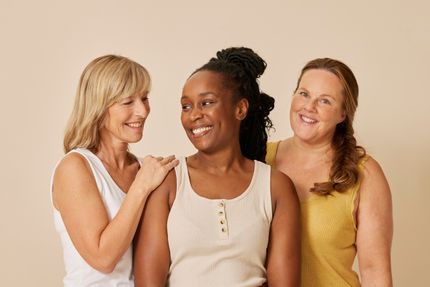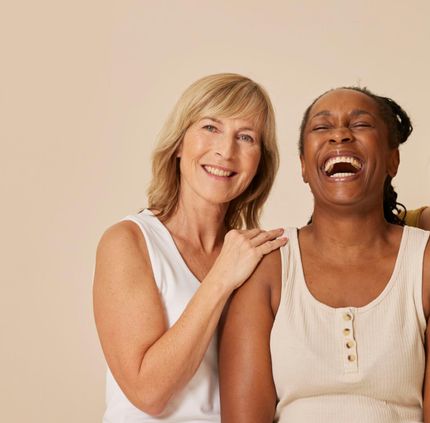

Annelies (age 52): “At first, I thought it was just muscle pain”
Annelies is 52 years old and she’s been going through perimenopause for a few years now. She own a beauty salon and loves her job. For Annelies, perimenopause came with a host of symptoms. “I was waking up in the middle of the night and often felt stressed and irritable,” she says. “I assumed this was normal and tried to get on with my life. Then my muscles started aching a lot.”
The first signs: stiffness and muscle pain
Osteoarthritis generally develops gradually over the course of several months or years. This also applied to Annelies. “It started with an achy and stiff feeling in my hands and knees. Doing certain movements became more difficult. In the morning I’d wake up stiff as a board. At first, I thought it was just muscle pain. I was into sports back then, and I wasn’t getting any younger,” Annelies explains.
Then the pain got worse to the point of interfering with everyday life and work. “I am a beautician and own a salon. My hands are my most important tools, so to speak. Naturally, this worried me.”
The diagnosis: osteoarthritis
It was clear to Annelies that her symptoms were serious. “My symptoms got worse. I was afraid something was terribly wrong, so I went to see my GP. My GP examined me, and X rays were taken. It was then that I found out I had osteoarthritis.” The diagnosis was a huge blow. “I was in shock, confused. I couldn’t believe I had osteoarthritis. I was in my early 50s!”

I was in shock, confused. Osteoarthritis? I was in my early 50s!

Shocked and relieved
At that time, Annelies knew little about the condition affecting millions of people worldwide. Osteoarthritis is a degenerative disease caused by the wearing down of cartilage in the joints. It commonly affects the elderly but can also occur in younger people. “I wasn’t aware that osteoarthritis can develop early on in life,” she says. “My GP told me that it was probably a combination of age and hormonal changes brought on by menopause that caused osteoarthritis to develop.”
Being diagnosed gave Annelies context and a way forward. “It was a shock and a relief. At least I knew what was causing the symptoms and how to deal with it.”
Medication is an option but not the only option
The doctor prescribed anti-inflammatory painkillers. Annelies: “Being able to work without being in pain was a huge relief. Becoming incapacitated from work was my worst nightmare.”
After a while, Annelies began to wonder about her options. “I got fed up with taking medication. Surely there had to be a better solution than just popping pills!” This turned out to be true.
“My symptoms improved quickly"
“My lifestyle wasn’t exactly unhealthy, but when I started exploring the options, I found out there were changes I could make that would benefit my muscles and joints.”
What kind of changes? “Well, I liked things to be convenient and not too much hard work. In my mind, there was nothing wrong with having two white buns with cheese spread for lunch, followed by a cereal bar or a cracker. I also loved drinking sodas. I mean, is there anything better on a hot day than a glass of chilled coke with ice?”

I've now found the perfect combination between a healthy lifestyle and medication.

Annelies decided to change her lifestyle for the better. Her motto? Goodbye cookies and cereal bars, hello healthy fats, fresh vegetables and fruit. “I noticed the difference almost immediately. In my joints, and I also had much more energy.”
A friend suggested taking magnesium, Vitamin C and omega-3. All three nutrients contribute to slowing down the development of osteoarthritis. This was helpful to Annelies as well. “I like the feeling of being in control of my body. Of course, osteoarthritis is something I have to live with. But I feel much more in control compared to when I was diagnosed. I've found the perfect combination between a healthy lifestyle and medication.”
Relieve your menopause symptoms
The changes in your body don’t mean you have to endure the associated discomfort in silence. There are many ways to help yourself feel better.

Tips and advice











